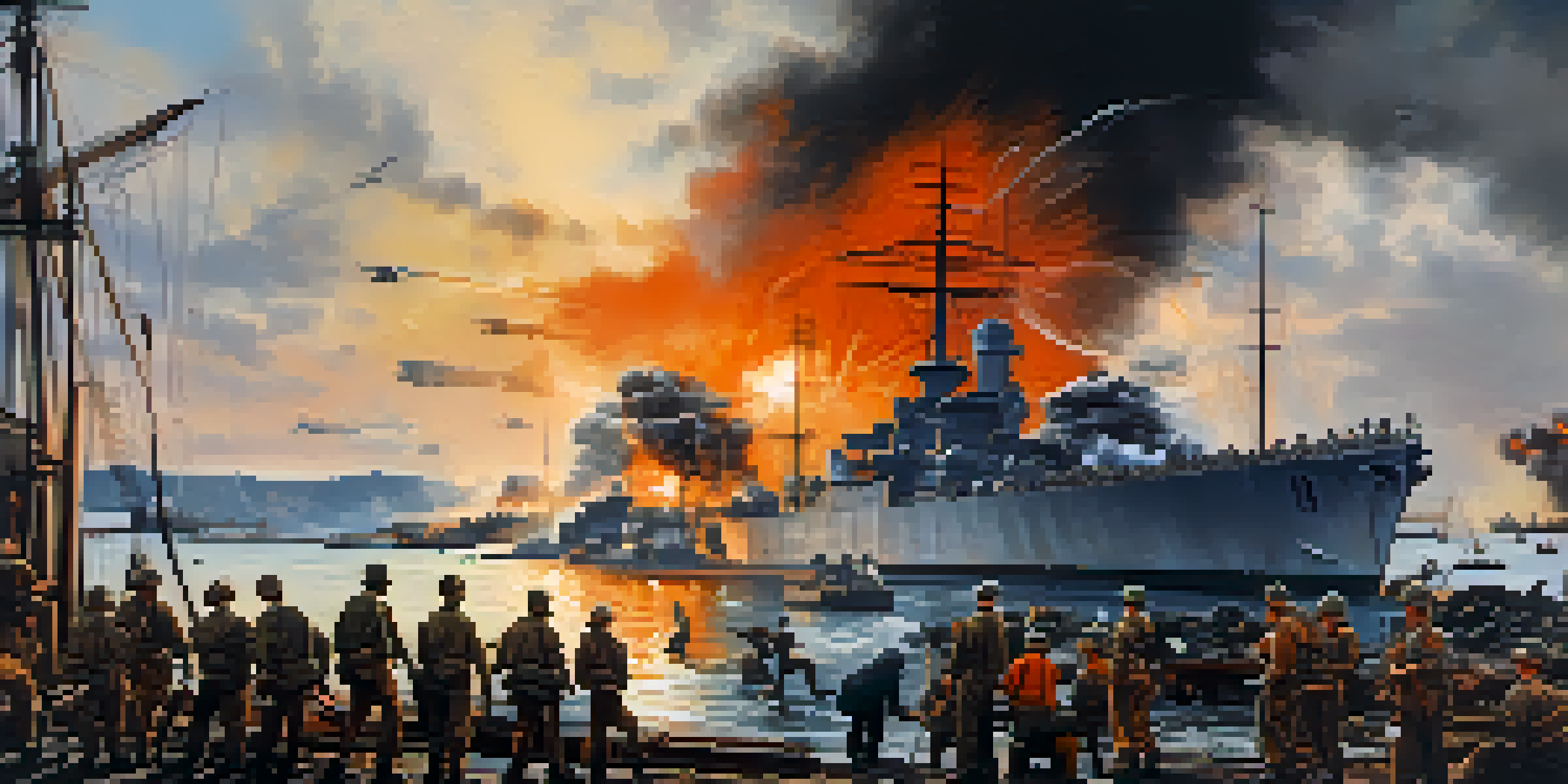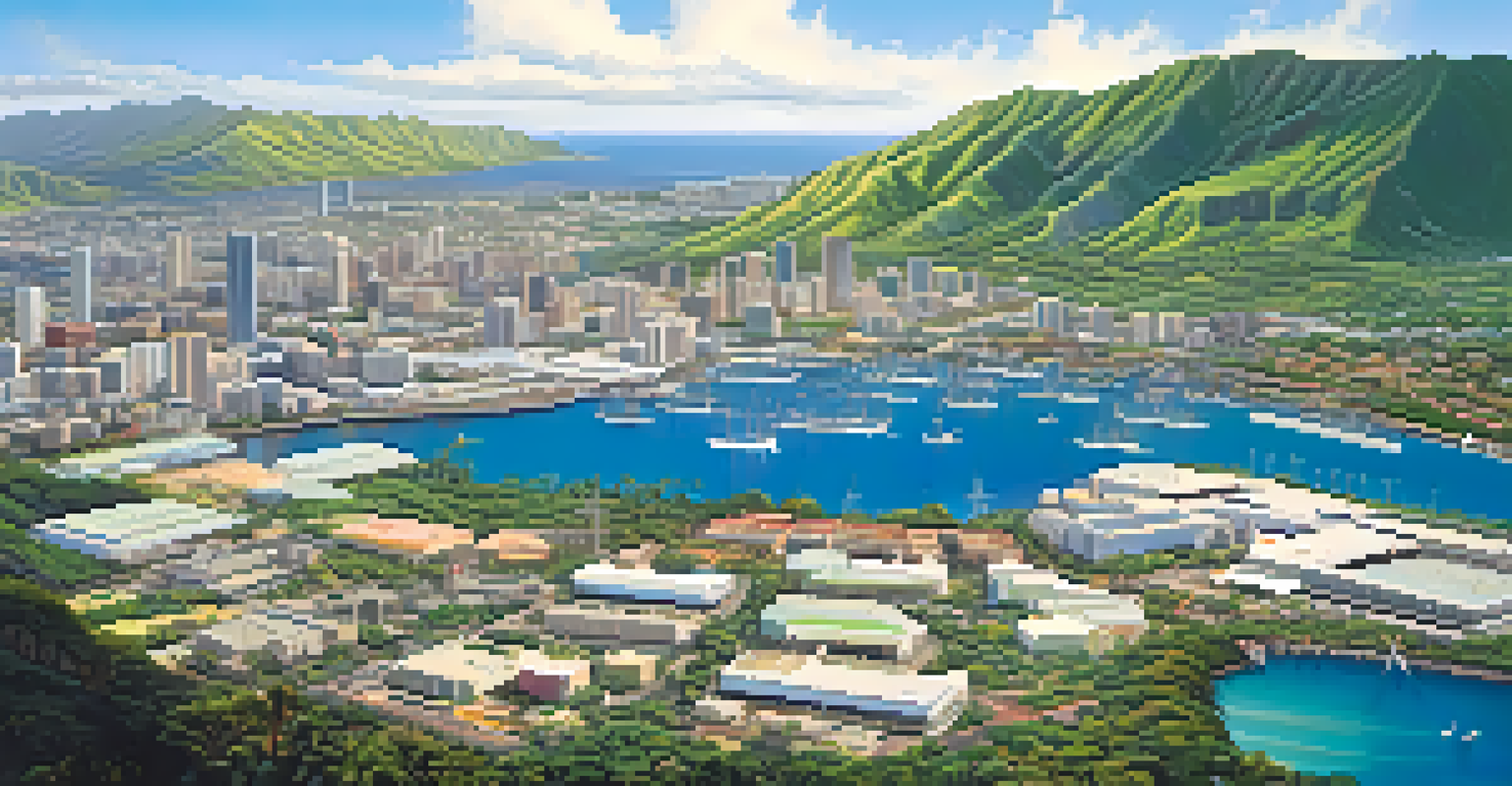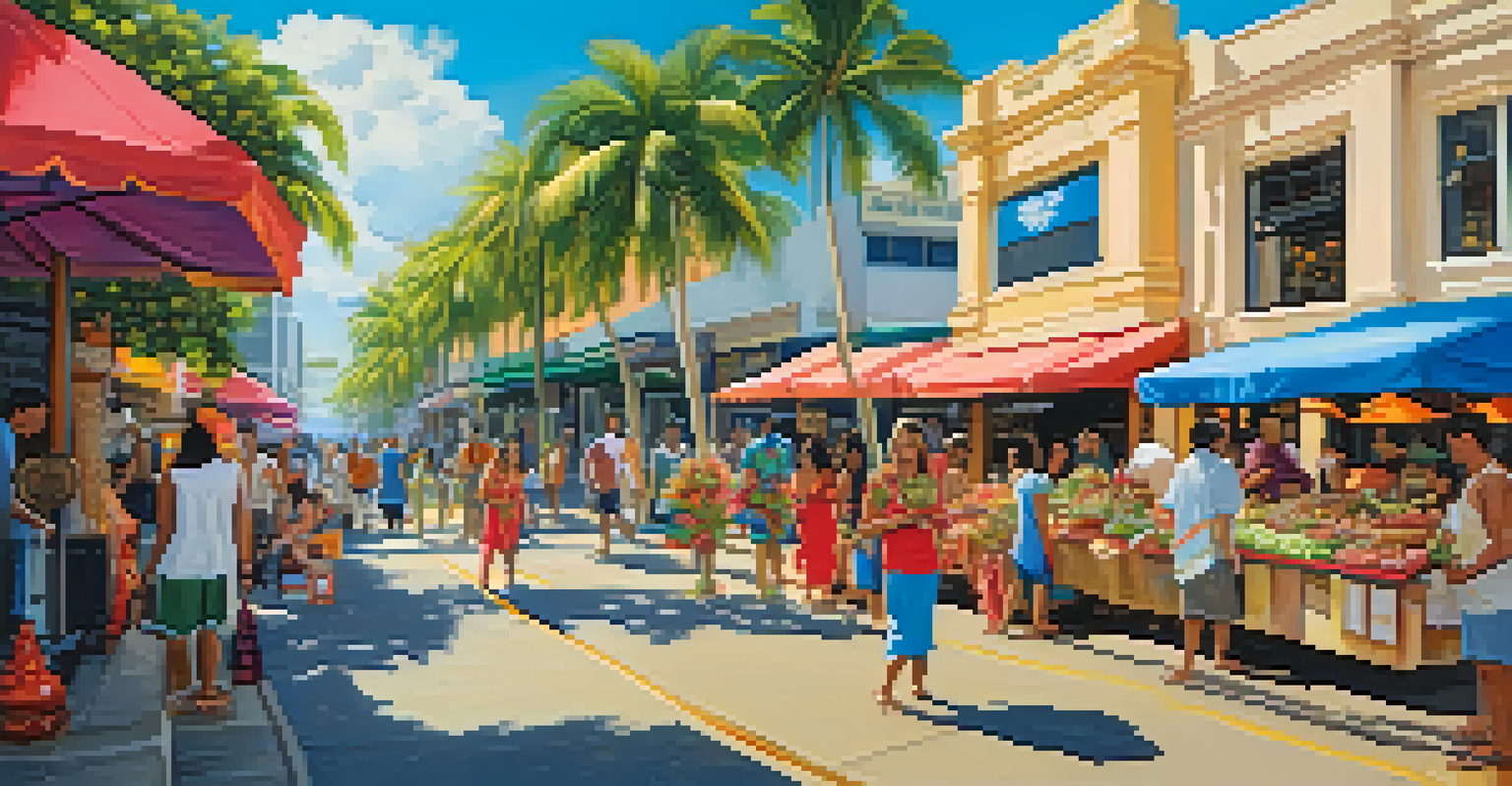The Impact of Pearl Harbor Attack on Honolulu's Development

Immediate Aftermath of the Pearl Harbor Attack
The attack on Pearl Harbor on December 7, 1941, was a pivotal moment for Honolulu, thrusting the city into the global spotlight. The devastation left in its wake not only caused immense loss of life but also prompted a significant military response. As the U.S. entered World War II, Honolulu became a central hub for military operations in the Pacific.
History is written by the victors.
In the wake of the attack, many residents faced immediate challenges, including evacuation orders and the need for emergency services. The local economy, which had been primarily based on tourism and agriculture, shifted dramatically to support the war effort. This sudden transformation laid the groundwork for Honolulu's future development.
As the military presence grew, so did the demand for housing, infrastructure, and services. Local businesses began to adapt, catering to the needs of servicemen and their families. This shift not only altered the economic landscape but also fostered a sense of community resilience among residents.
Military Expansion and Economic Growth
The strategic importance of Honolulu during the war led to a massive expansion of military facilities. New bases, airfields, and naval docks were constructed, transforming the city into a bustling military metropolis. This military expansion created thousands of jobs and attracted workers from across the country, further diversifying the local economy.

With the influx of military personnel and their families, Honolulu experienced a population boom. This growth necessitated improvements in infrastructure, including roads, schools, and healthcare facilities. As these developments took shape, the city began to evolve from a quiet island community into a vibrant urban center.
Pearl Harbor's Impact on Honolulu
The attack on Pearl Harbor transformed Honolulu into a vital military hub, significantly altering its economic landscape.
The economic benefits of this military presence were significant, leading to a post-war boom that reshaped Honolulu's identity. Local businesses thrived, and new industries emerged, laying the foundation for a more diverse economy that would continue to grow in the decades to come.
Cultural Shifts and Community Resilience
The Pearl Harbor attack and subsequent military presence brought diverse cultures together in Honolulu. As servicemen from various backgrounds arrived, they mingled with local residents, creating a melting pot of traditions and customs. This cultural exchange enriched the community, influencing everything from cuisine to music.
We must never forget that history is not just a series of events, but a story of people and their struggles.
Residents demonstrated remarkable resilience in the face of adversity. The shared experience of the attack and the war fostered a strong sense of camaraderie among the citizens. Community organizations and events flourished, promoting unity and support for those affected by the conflict.
As the war ended, the cultural landscape of Honolulu continued to evolve, reflecting the influences of both local traditions and those of incoming military families. This blending of cultures contributed to the unique identity of Honolulu that we recognize today.
Urban Development and Infrastructure Improvements
Post-war Honolulu saw significant urban development as the city adapted to its new role as a military and economic hub. Infrastructure improvements were essential to accommodate the growing population and military presence. Roads, bridges, and public transport systems were upgraded, paving the way for a more connected city.
The need for housing also spurred large-scale construction projects. New neighborhoods emerged, catering to both military families and local residents. This expansion not only provided homes but also created vibrant communities that fostered social interaction and economic activity.
Cultural Exchange and Resilience
The influx of military personnel created a melting pot of cultures in Honolulu, fostering community resilience and unity.
As Honolulu continued to modernize, attention shifted to preserving its unique cultural heritage. Balancing development with the preservation of historical sites became a priority, ensuring that the city's rich history was not lost in the rush to expand.
Tourism Boom and Post-War Economy
In the years following World War II, Honolulu experienced a tourism boom that transformed its economy once again. With the military's influence waning, the city capitalized on its natural beauty and cultural richness to attract visitors from around the world. This shift marked a new chapter in Honolulu's development, focusing on hospitality and tourism.
The growth of the tourism industry led to the establishment of hotels, restaurants, and entertainment venues. Local entrepreneurs seized the opportunity, creating business ventures that showcased Hawaiian culture and traditions. This influx of tourists not only generated revenue but also provided jobs for residents, further boosting the economy.
As Honolulu became a popular vacation destination, the city invested in infrastructure to support its tourism sector. Improvements in transportation, recreational facilities, and cultural attractions solidified Honolulu's reputation as a premier travel destination, contributing to its long-term economic stability.
Environmental Considerations in Urbanization
As Honolulu developed rapidly in the post-war era, environmental considerations became increasingly important. The city's growth came at a cost, with urbanization threatening the delicate ecosystems of the Hawaiian Islands. Local leaders began to recognize the need for sustainable practices to protect the natural beauty that drew tourists in the first place.
Efforts to balance development with environmental preservation led to the implementation of regulations and initiatives focused on sustainability. These measures included protecting coastal areas, promoting green spaces, and advocating for responsible tourism practices. This shift in mindset marked a turning point in how the community approached growth.
Tourism Growth Post-War
Following World War II, Honolulu capitalized on its natural beauty and cultural richness to become a premier travel destination.
Today, Honolulu continues to grapple with the challenges of urbanization while striving to maintain its environmental integrity. The ongoing dialogue between development and conservation reflects the city's commitment to preserving its unique landscape for future generations.
Legacy of Pearl Harbor in Modern Honolulu
The legacy of the Pearl Harbor attack is deeply embedded in the identity of modern Honolulu. It serves as a reminder of the city's resilience and adaptability in the face of adversity. Commemorative sites, such as the USS Arizona Memorial, attract visitors and honor the sacrifices made during that pivotal moment in history.
Moreover, the events of Pearl Harbor have shaped Honolulu's role in national security and defense. The ongoing presence of military installations continues to influence the local economy and community dynamics. This connection to the past remains a vital part of Honolulu's narrative, intertwining with its growth and development.

As the city looks to the future, it does so with an awareness of its history. The lessons learned from the Pearl Harbor attack guide decisions about urban planning, cultural preservation, and community engagement, ensuring that the spirit of unity and resilience remains alive.